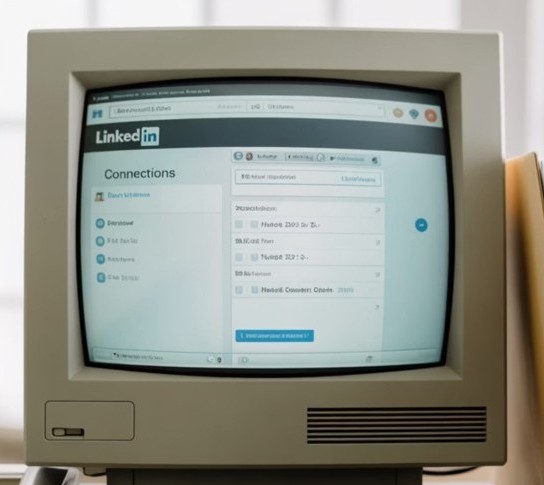From a Sober Tool to a Digital Presence Platform
LinkedIn was born in 2003 to solve a very specific problem: enabling professional connections in a digital environment that still didn’t quite know how to manage professional identity. Unlike networks like Facebook or Twitter (now X), built around personal life and entertainment, LinkedIn positioned itself from day one as a serious, utilitarian and deliberately restrained tool.
Profiles worked as online résumés, connections were mostly transactional, and content exchange was limited to job updates or third-party articles.
The Profile as the Core of the Value Proposition
For the first few years, everything revolved around the profile rather than the discourse. The platform consolidated its business model around three clear revenue streams:
- Targeted advertising: LinkedIn allowed advertisers to reach professionals based on role, sector or seniority level, making it—at the time—an extremely effective platform for B2B campaigns aimed at decision-makers.
- Premium subscriptions: Paid accounts offered increased visibility, extended contact access and advanced search tools, although their financial weight remained secondary.
- Recruitment solutions: The true backbone of the business. Tools like LinkedIn Recruiter or Job Postings became the industry standard for talent acquisition across thousands of companies.
LinkedIn was fundamentally a space for search and professional visibility, not a place to build public identity.
The Shift Toward Content as a Visibility Requirement
That balance started to change when the platform decided to compete not only in the field of networking but also in the field of attention.
“With acquisitions like SlideShare, Pulse and Lynda.com, LinkedIn stopped being just a professional directory and became an environment where content no longer accompanied the profile — it began defining it.”
Publishing ceased to be optional and became a structural part of the algorithmic game.

From Expertise to Narrative: The Rise of the Emotional Tone
The most profound shift came when knowledge began to be overshadowed by storytelling. What had once been a space for sharing industry insights or technical lessons gradually turned into a more emotional format, where visibility relied as much on substance as on the ability to turn any experience into an inspirational anecdote.
The algorithm figured out that quick engagement comes more easily through empathy than information, and the tone of the network adapted accordingly.
The Generational Effect: From Functional Network to Identity Platform
Unlike other social networks —TikTok for the young, Facebook for the older crowd, Snapchat for teenagers— LinkedIn was never designed with an age bias. It was meant to be transversal, accompanying professionals from their early years to career maturity.
However, instead of maintaining that cultural neutrality, it has been gradually absorbed by a particular type of user who imported the expressive codes of leisure platforms into the professional environment.
The result is a strange coexistence of job postings, technical commentary and melodramatic confessions seeking more reaction than reflection.
Was This Shift Necessary?
It’s worth asking the underlying question: was this change truly necessary? Not every platform needs to evolve toward soft socialisation. Not every digital space must prioritise emotional bonding over functional value.
LinkedIn could have remained the last network where professional merit outweighed rhetorical flair, yet it yielded to the uniform logic of the attention economy. Perhaps innovation doesn’t always lie in becoming more like the rest, but in resisting the urge to imitate their dynamics.
Professional Network or Emotional Stage?
This is not about rejecting the human dimension —which can add context and authenticity— but acknowledging that the platform’s general tone has shifted from merit to narrative, from profile to persona. Today, the ability to tell a story often matters more than having something substantial to tell. And that raises a fair question:
“Can a platform remain professional if its algorithm rewards sentiment over substance?”
Who sets the course for a corporate social network?
Since LinkedIn was acquired by Microsoft, it no longer has independent shareholders or trades separately. This shift has had significant consequences: the platform’s mission and objectives now find themselves “sandwiched” between competing forces. On one hand, users are encouraged to shape the network’s direction; on the other, profitability criteria push it away from its original purpose.
This tension between community and business raises a fundamental question: who truly sets the course?
Reclaiming Credibility as a Competitive Advantage
LinkedIn, as a platform, isn’t the problem. The issue lies in how it’s used—when authority is mistaken for visibility, and adapting to the “new times” (sic) becomes a forced and unsuitable shift from professional network to social network. And precisely because the noise has increased, sober, clear, and well-grounded content risks getting lost in the limbo of the “feed”.
The real challenge is no longer about mastering the mechanics of publishing, but about choosing the purpose behind it: to be visible at any cost in the short term, or to be credible in the long run.



